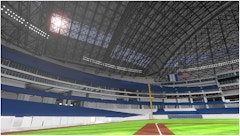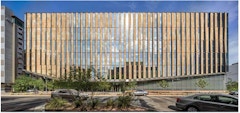Contextualizing Glass and Carbon Impacts
Climate change goals will require significant improvements in the way buildings are constructed and operated. Building reuse can combat climate
Climate change goals will require significant improvements in the way buildings are constructed and operated. Building reuse can combat climate

Aesthetic and technical capabilities of facade design have become seemingly endless as building technologies progress. While the capacity to address


This paper examines two profoundly different design approaches: one, herein called ‘autonomous’, where the building’s design is governed by internal


Projecting imagery onto building facades is not only becoming a marketing necessity for successful urban spectacles but is also altering social urban

The paper will try to study the impact of window opening on waiting room experience of patients in an eye hospital along with their attendants. As

Today’s environmental challenges highlight the necessity of a holistic approach to façade design and construction, key to achieve the ambitious 2030

Fidelity between the built enclosure and early visualizations is rarely, if ever, an accident. When achieved, it comes as the result of persistent

Daylighting is often an important component of architectural design and heavily influenced by a building’s facade and enclosure systems. Unlike many
The impacts of climate change, driven by increasing extreme temperature, sea-level rise, and heavy precipitations, interact and play an essential

What does the fourth industrial revolution mean to the design and engineering of facades of the future? We are experiencing a global technological

Buildings account for over 40% of global emissions (GlobalABC, 2018). Growing populations and higher standards of living are increasing pressure on


Responsive facade system is considered a major component of high-performance building envelope that is capable of responding to environmental stimuli

Life Cycle Assessment (LCA) is a methodology used to quantify the impact of building construction supply chains on the environment in terms of


Unitized curtain wall has become ubiquitous in contemporary facade design and construction due to advantages associated with speed of erection, lower